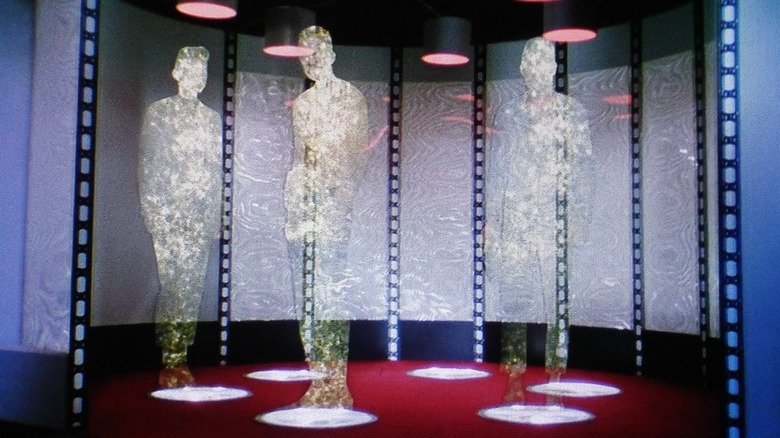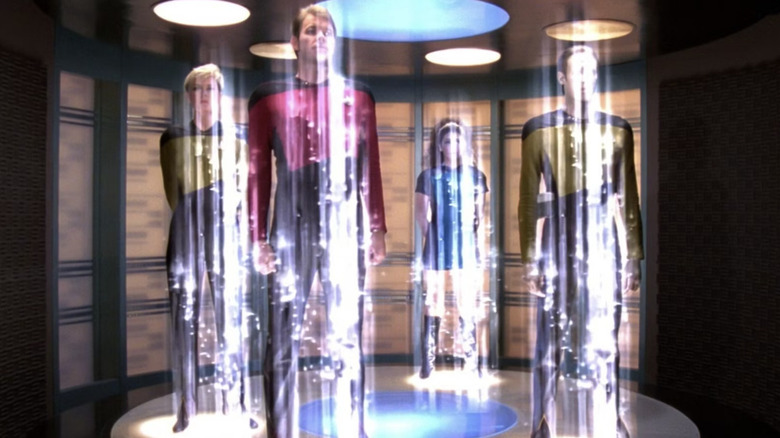Star Trek Transporters Served A Practical Purpose On The Sci-Fi Set
The transporter is one of the definitive gadgets of the "Star Trek" universe. Sure, there's other impressive technology in this world, but faster than light starships, energy weapons, holograms, androids, etc.? Plenty of other science-fiction stories have those. The transporter, a device that "energizes" matter and reassembles it in another location? That belongs to "Star Trek" alone.
The offscreen origin of the device is documented in "The Making of Star Trek," a 1968 behind-the-scenes book written by Stephen E. Whitfield and series creator Gene Roddenberry. As is often the case in television, the transporter was designed for narrative (and budget) convenience.
The core premise of "Star Trek" has always been a (mostly) human starship crew visiting strange new worlds. Obviously, the crew would have to get from orbit down to the planet's surface. Landing the Enterprise? Out of the question, per Roddenberry:
"Land a ship 14 stories tall on a planet surface every week? Not only would it have blown our entire budget, but just suggesting it would have ruined my reputation in the industry forever."
So, the transporter came about instead. The book documents how many of the series' other tenets about space travel came about for similar reasons. For instance, the worlds that the Enterprise visited are mostly "M-Class," aka Earth-like. That was so the crew wouldn't have to go all-out on making set designs or costumes inexpensively alien.
The transporters energized Star Trek's cost saving
"Star Trek" cost about $185,000 per episode (barring any production problems), which is roughly $1.75 million in 2024 money. In other words, the production was already costing a pretty penny, so cutting corners where the show's creatives could made all the sense in the world.
The transporter effect was designed by the Howard Anderson Company. Two shots of the transporter set would be taken; one with the actors standing in place, one of just the empty set. The actors' outlines on the film would be "masked," while the glittering transporter effect was achieved by dropping aluminum powder in front of a heavily lit black background. Check out a transporter shot being filmed below:
In "The Making of Star Trek," Roddenberry claims that the transporter saved the show's writers a lot of time, allowing them to get right to the action much quicker:
"If someone had said, 'We will give you the budget to land the ship,' our stories would have started slow, much too slow. The fact we didn't have the budget forced us into conceiving the transporter device — 'beam' them down to the planet — which allowed us to be well into the story by script page two."
Modern "Star Trek" shows have the budget and technology to render the transporter effect digitally, but the concept has never gone out of style in the franchise's almost 60 years of existence. Roddenberry was right, it's just too convenient a storytelling tool.

